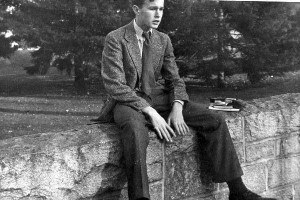The first step in mastering the art of classic dress is learning the underlying principles behind the clothes. It took me quite a while to learn these principles. I learned through a lot observing, reading, and studying. It turns out that I could have saved myself a lot of time had I just referenced Lisa Birnbach’s list in “The Official Preppy Handbook.” Although the text is meant to be humorous it is quite accurate once you look beyond the tongue-in-cheek humor. In an effort to save you time if you are unfamiliar with these principles or just in case you need a quick refresher I have included the list below.
1. Conservatism – Preppies wear clothes for twenty-five years and no one can tell the difference. The fabrics, the cuts, and the colors are the same, year after year after year. A kilt from 1958, a ten-year-old tweed overcoat, a three-button suit bought in 1940 can all be worn until they fall apart.
2. Neatness – (Except for a brief period of rebellion during secondary school.) Shirts stay tucked in, through all kinds of strenuous exercise. Shoes are polished. Socks stay up. Sweaters are patched the moment holes appear in the elbow.
3. Attention To Detail – Subtleties of cut, weave, or color distinguish the merely good from the Prep. A small percentage of polyester in an oxford-cloth shirt or a lapel that’s a quarter of an inch too wide can make all the difference. Cuff buttons on a suit jacket that can actually be unbuttoned are the hallmark of a natty dresser. Everything matches – some Preppies go as far as to change their watchbands everyday.
4. Practicality – Prep clothes are sensible: rain clothes keep you dry; winter clothes keep you warm; collars are buttoned down so they don’t flap in your face when you’re playing polo. Layering is a natural response to varying weather conditions.
5. Quality – Everything in the wardrobe should be well made. Fine fabrics and sound construction are taken for granted., hand tailoring is not unusual. Preppy clothes are built to last, since they certainly won’t go out of style.
6. Natural Fibers – Wool, cotton, and the odd bits of silk and cashmere are the only acceptable materials for Prep clothes. They look better. They require professional maintenance. They are more expensive. They are key.
7. Anglophilia – The British have a lot to answer for: Shetland sweaters, Harris tweeds, Burberrys, tartans, regimental ties.
8. Specific Color Blindness – Primary colors and brilliant pastels are worn indiscriminately by men and women alike, in preposterous combinations. In some subcultures hot pink on men might be considered a little peculiar; Preppies take it for granted.
9. The Sporting Look – Even if they’ve never been near a duck blind or gone beagling, Preppies are dressed for it. Rugged outerwear (snakeproof boots, jackets that will keep you warm at 60 below zero) and hearty innerwear (fisherman’s sweaters and flannel-lined khakis) are de rigueur in even the most sophisticated suburbs.
10. Androgyny – Men and women dress as much alike as possible and clothes for either gender should deny specifics of gender. The success of the Lanz nightgown is based on its ability to disguise secondary sexual characteristics, while the traditional fit for men’s khakis is one size too big.

































